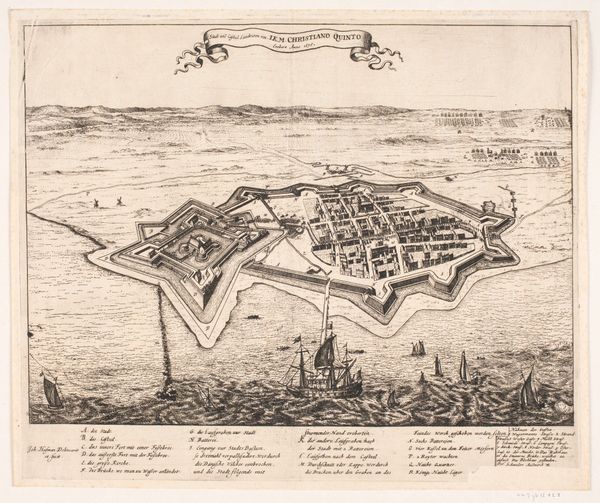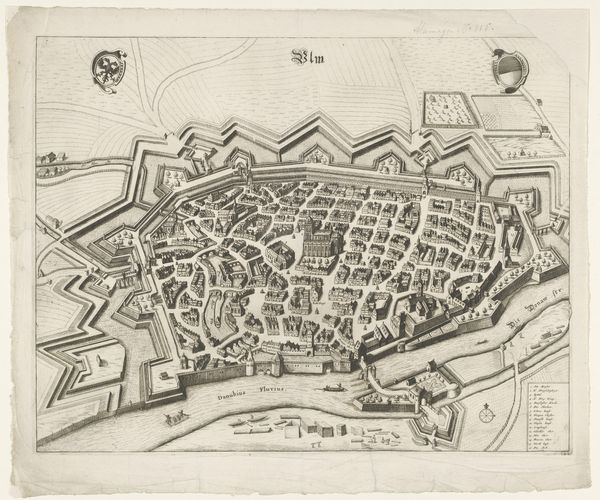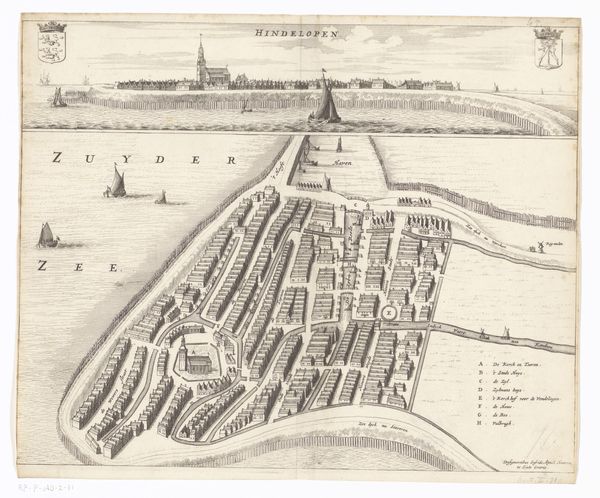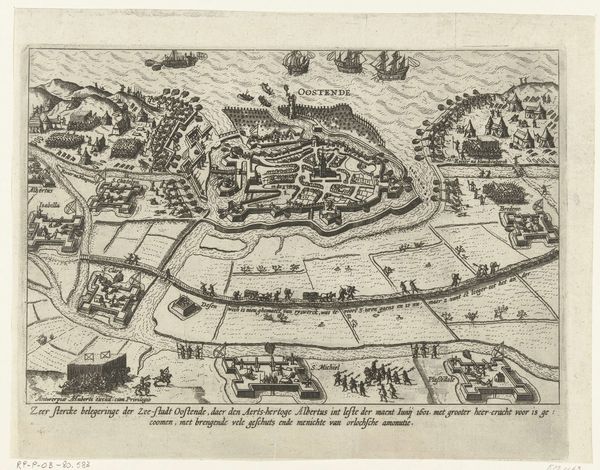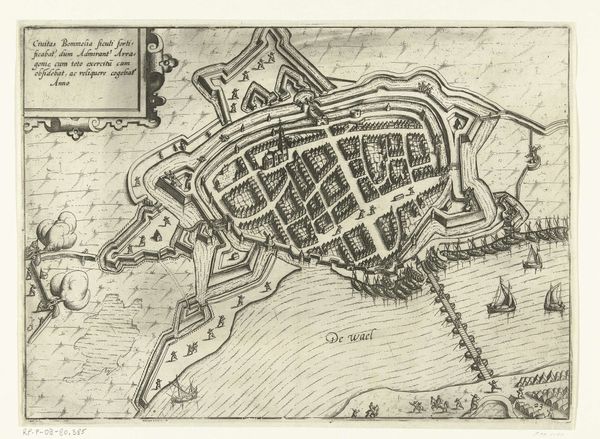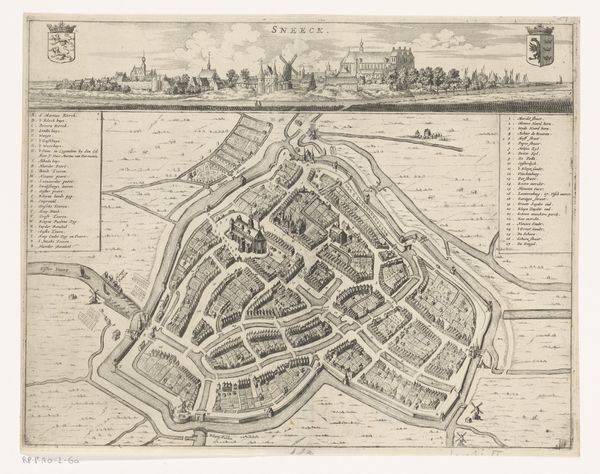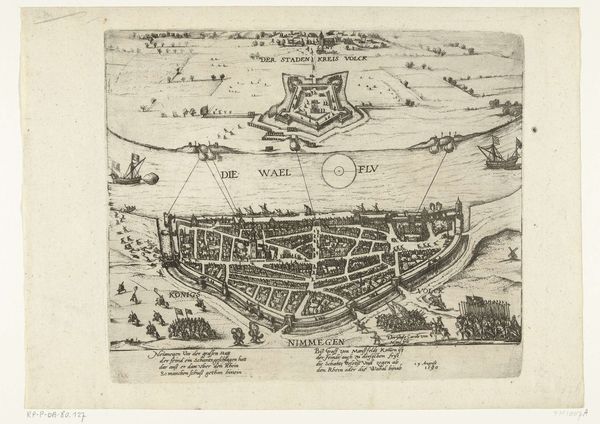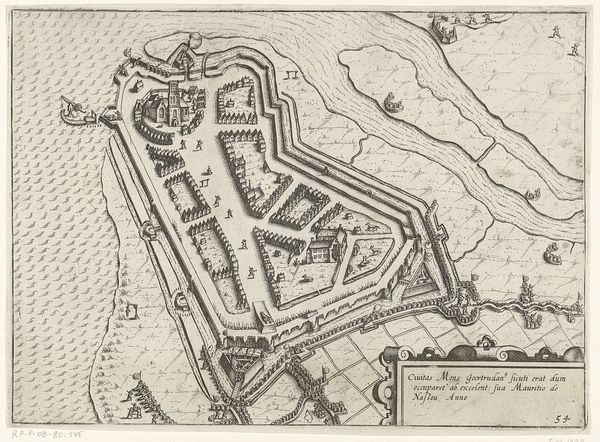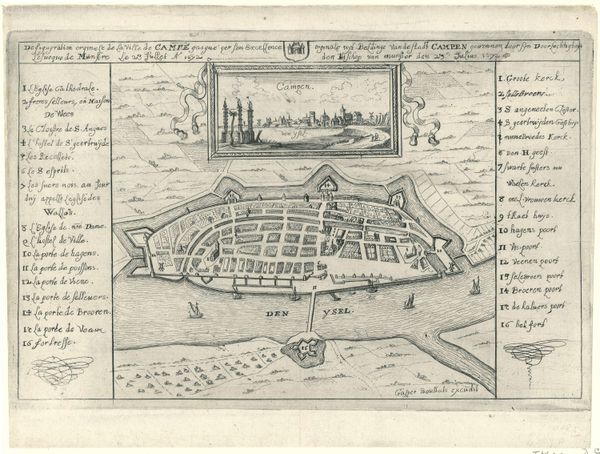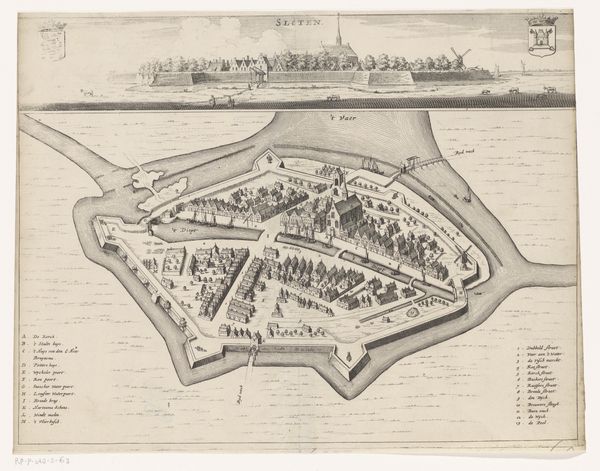
Stadt und Castel Landscron von I.K.M Christiano Quinto Erobert Anno 1676 1676 - 1699
0:00
0:00
drawing, print, engraving
#
drawing
#
baroque
# print
#
landscape
#
figuration
#
geometric
#
line
#
cityscape
#
history-painting
#
engraving
Dimensions: 291 mm (height) x 389 mm (width) (plademaal)
Editor: This is a print titled "Stadt und Castel Landscron von I.K.M Christiano Quinto Erobert Anno 1676" created sometime between 1676 and 1699. It's currently held at the SMK, and attributed to Johann Husman. It shows a bird’s-eye view of a city and a star fort, seemingly under siege. There are ships in the foreground and what appears to be an army encampment in the distance. The linear quality of the engraving gives the scene a very factual, almost cartographic mood. What historical echoes do you hear when looking at this image? Curator: This engraving pulses with the energy of a specific historical moment. Look at the city itself. Do you notice how the fortifications seem to dominate the urban space, even dictate its form? What does this tell you about the cultural priorities of the time? Editor: Well, the star fort is really prominent, taking up a good third of the image. That certainly suggests security was top of mind! Curator: Precisely! Star forts like these emerged as a response to advancements in artillery. They embody a specific kind of visual language – a promise of protection and military power. How do you interpret the inclusion of ships and the distant army? Are they simply contextual, or do they add a symbolic layer? Editor: I see your point. The ships imply naval power, controlling trade routes, while the distant army shows military strength. These were more than simple landmarks in a military scene. Curator: Absolutely. These details are imbued with cultural memory. These elements reinforce themes of conquest, power, and the role of military technology. And how does the choice of engraving, a reproducible medium, influence our interpretation? Editor: That's a good question! Being easily reproducible probably meant it could be shared widely as propaganda after the conquest, influencing opinions about who Christian V was. I never considered this a piece of propaganda before! Curator: Exactly! Consider how visual symbols shape and solidify collective understanding, impacting future generations. Editor: It's interesting how one image can tell so many stories about power, protection, and even propaganda. I am walking away from this with a changed perception.
Comments
No comments
Be the first to comment and join the conversation on the ultimate creative platform.
